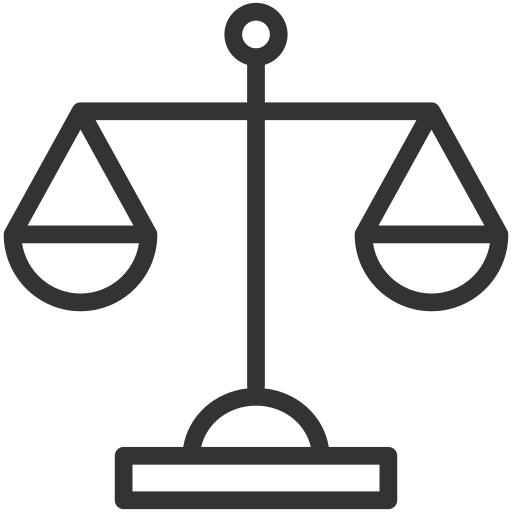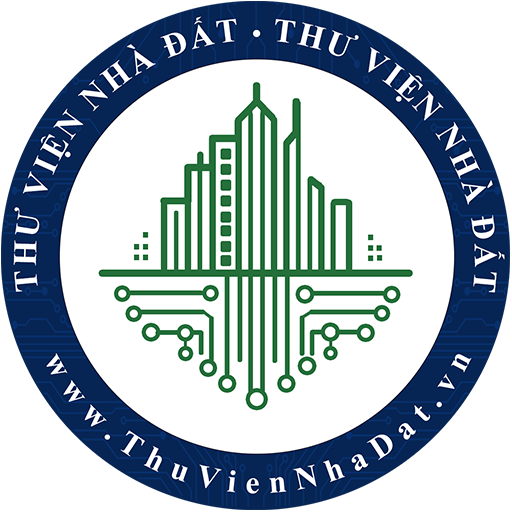|
PRIME MINISTER
OF VIETNAM |
SOCIALIST
REPUBLIC OF VIETNAM |
|
No. 222/QD-TTg |
Hanoi, January 23, 2025 |
INTRODUCING THE NATIONAL ACTION PLAN FOR CIRCULAR ECONOMY IMPLEMENTATION BY 2035
THE PRIME MINISTER OF VIETNAM
Pursuant to the Law on Government Organization dated June 19, 2015 and the Law on Amendments to the Law on Government Organization and the Law on Local Government Organization dated November 22, 2019;
Pursuant to the Law on Environmental Protection dated November 17, 2020;
Pursuant to Decree No. 08/2022/ND-CP dated January 10, 2022 of the Government elaborating certain Articles of the Law on Environment Protection;
At the request of the Minister of Natural Resources and Environment;
HEREBY DECIDES:
Article 2. This Decision comes into force from the day on which it is signed.
|
|
PP. PRIME
MINISTER |
(enclosed with Decision No. 222/QD-TTg dated January 23, 2025 of the Prime Minister)
Climate change, environmental pollution and degradation, loss of biodiversity, scarcity of raw materials and supplies are significant challenges facing humanity in the 21st century. Numerous initiatives at both global and regional levels have been adopted and vigorously implemented to address these challenges such as: The 2030 Agenda for Sustainable Development, Sustainable Development Goals (SDGs) and the Paris Agreement on climate change aiming for net-zero emissions by 2050, the Kunming-Montreal Global Biodiversity Framework 2022, the Decade on Ecosystem Restoration (2021 - 2030), etc. The trend of integrating issues related to environmental protection, climate change response, conservation of nature, biodiversity, green economy, circular economy (CE), low-carbon economy and sustainable development into the process of negotiation, construction or upgrading of international treaties and new-generation free trade agreements (FTAs) is becoming increasingly common. In the above context, new demands, opportunities and challenges for production, business, trade, investment, finance, resource management, environmental protection, climate change response, employment, and security have been or are being created.
The circular economy development achieves the consensus of the international community, is seen as a means to harmoniously address the relationship between economic growth and development and environmental protection, and serves as a pathway towards a green economy and sustainable development. Many countries and regions have issued or are in the process of developing strategies, plans, and visions, establishing legal frameworks to promote the circular economy implementation in accordance with the characteristics and conditions of each country or region. CE framework for the ASEAN Economic Community was approved in 2021 with an aim of making ASEAN a center for innovation and mobilizing investment for CE development, high competitiveness, economic prosperity, environmental sustainability, and social equity.
In the recent period, Vietnam has achieved many important accomplishments in socio-economic development, with the transformation of the growth model linked to the restructuring of the economy towards green growth and sustainable development yielding many positive results. Climate change response, resource management and environmental protection are initially placed at the epicenter of development decisions in order to achieve better uniformity, effectiveness and proactivity. The resources are planned, managed, exploited and used rationally, economically, effectively, and sustainably. The production and consumption in the economy show positive signals, with several initiatives and models for sustainable production and consumption, models for effectively using resources, recycling and reusing waste being established, popularized, and developed. The environmental protection is emphasized and innovated strongly with a consistent policy of not sacrificing the environment for mere economic growth and gradually shifting from a reactive response to proactive prevention, control, and restoration. However, the management of resources is still limited; the efficiency of resource exploitation and utilization is low compared to the world and the region; the level of waste and wastewater generation continues to increase; sorting, collecting, recycling, reusing and treating waste face many difficulties; pollution and environmental degradation are still ongoing issues.
CE development in Vietnam has early received the attention, orientation, and unified direction of the CPV and the State in many documents such as: The strategy for socio-economic development for the 10 years from 2021 to 2030 and many relevant resolutions promulgated by the central government on energy, industrialization, modernization, urbanization, agriculture, rural areas, farmers, sustainable development of socio-economic regions, resource management, environmental protection, and climate change response. Schemes for CE development of Vietnam have been issued, and CE is gradually being integrated into the development strategies, programs, schemes, planning and plans of various sectors, fields, and local areas. Environmental protection laws have institutionalized the CE, put forward regulations on criteria, measures, responsibility and mechanisms for promoting CE. In reality, certain sectors, fields, local areas, enterprises and cooperatives have taken the initiative to actively apply measures for CE implementation in their management, production, business, and service provision. However, alongside the achieved results, CE development still faces many limitations, is spontaneous, lacks synchronization, and fails to meet the requirements set in the context of national resource capacity being limited, deteriorating and being depleted; raw materials, fuels, and materials are becoming increasingly scarce; waste generation is on the rise; the environment is deteriorating, biodiversity is declining, and the impacts of climate change continue to escalate.
The National Action Plan for CE development by 2035 specifies the roadmap for implementing CE in accordance with the 2020 Environmental Protection Law, Decree No. 08/2022/ND-CP dated January 10, 2022 of the Government elaborating certain articles of the Environmental Protection Law (hereinafter referred to as “Decree No. 08/2022/ND-CP”), and the guidelines and policies of the CPV and State on CE development with perspectives, objectives, tasks, solutions, and prioritized sectors and fields for implementing CE nationwide; it serves as a basis for ministries, central authorities and local authorities to develop and organize CE implementation within their assigned functions, tasks, scope and areas of management.
1. CE implementation is prioritized to create new growth drivers, enhance resilience and recovery for the economy, achieve breakthroughs in development, promote innovation in growth models, improve quality, efficiency and competitiveness, create new value-added chains, harmonize the relationship between the economy and the environment, contribute to the fulfilment of international commitments on nature conservation, biodiversity, achieve net-zero emissions by 2050 and sustainable development.
2. Enterprises, cooperatives, production and business establishments, and service providers are proactive and creative in applying the CE; the rights and interests of consumers and citizens serves as a driving force for CE development; the state plays a central role in establishing an environment for institutions and policies, organizing management and regulation to encourage the participation of economic components, local communities, agencies, organizations, and individuals on the basis of the laws of the market economy regulated by the state, in accordance with common international practices, principles, and standards.
3. CE implementation is a regular, continuous and long-term objective linked to the innovation and the achievements of the Fourth Industrial Revolution, breakthroughs in science and technology; it is an important part of the green transition, the green economy, and low carbon; developing interconnected and uniform infrastructure among regions; developing high-quality human resources, creating new jobs to maximize the value of raw materials, materials and waste throughout the entire stages of design, production, distribution, consumption, and waste management.
4. The advantages, potential and characteristics of various disciplinaries, fields, regions and local areas are maximized in a manner that ensures the interconnection between sectors and regions, and comprehensive approaches to develop suitable CE models; best practices are developed, and culture is developed in sustainable production and consumption; the independence and autonomy are enhanced in mobilizing and effectively utilizing domestic and international resources for CE implementation; digital transformation is a crucial driver for developing advanced, modern, and sustainable CE models.
5. The interests of relevant subjects are ensured harmoniously, the people are placed at the center, the enhancement of social welfare and the quality of life of the people is being emphasized; CE development is conformable to the views, policies, guidelines, and laws of the CPV and State regarding the economic and social development of the country and the international trend of CE implementation.
1. General objective:
Develop a sustainable production and consumption system, effectively utilize the value of natural resources, maximize the use of recycled materials, minimize waste generation, and reduce negative impacts on the environment; strongly develop CE models in production and business; create incentives for innovation and improve labor productivity; promote best practices, establish a green culture and lifestyle, and encourage the creation of green jobs and the development of new value chains in CE field.
2. Objectives and targets by 2030
a) Reduce the exploitation and use of non-renewable resources and water resources; increase the efficiency of resource, raw material, and material usage; save energy.
- Strive to achieve the targets for the effective use of resources (land, water, minerals) equivalent to the leading ASEAN countries.
- Strive to reach 2.270 MW of capacity of power plants from biomass and solid waste sources by 2030, equivalent to 1,5% of the total capacity of power plants.
- Strive to reach at least 47% of renewable energy in the overall primary energy consumption.
- Strive to achieve a savings rate of 8 - 10% of the total national energy consumption.
b) Extend the usage time of materials, equipment, products, goods, components, and structures; limit generated waste and minimize adverse impacts on the environment:
- The rate of domestic solid waste collected and treated in urban areas rises to 95%.
- The rate of domestic solid waste collected and treated in rural areas rises to 80%.
- The ratio of domestic solid waste treated by direct landfilling to the waste collected decreases by less than 50%.
- The rate of treatment of production, business and service establishments, concentrated production, business and service areas, and industrial clusters’ wastewater discharged into the river basins reaches over 70%.
- The intensity of greenhouse gas emissions per unit of GDP decreases by at least 15% compared to the year 2014.
c) Focus on enhancing economic aspects, increasing benefits, promoting innovation and creativity, and mobilizing resources in CE implementation:
- Models of effectively utilizing natural resources, reusing and recycling waste and models of applying CE principles in business production are established, popularized, and developed according to each sector, field, region, and level.
- New and sustainable value chains linked to high added value are formulated and developed, and many new jobs are created through CE application.
- The number of technologies, devices, and products transferred for application and granted patents on recycling and reuse gradually increases over the years.
- Resources from green credit, green bonds, and other legitimate resources are attracted strongly for projects on investment in CE development.
3. Objectives and targets by 2035
a) Realize an inclusive CE associated with innovation, creativity, high competitiveness, economic prosperity, environmental sustainability, and social equity; position Vietnam as one of the centers for innovation, provision of technology, equipment, products, services, and mobilization of investment capital for CE within the ASEAN Economic Community (AEC).
b) Contribute to the successful achievement of the goals and targets regarding the effective use of resources, environmental protection, response to climate change, and sustainable development by 2035 and subsequent phases in the CPV's documents, strategies, policies, and laws of the State.
IV. CE IMPLEMENTATION TASKS AND SOLUTIONS
1. Enhance awareness, knowledge, skills, and develop best practices for CE implementation:
a) Communication, refresher training, dissemination of knowledge of laws on CE implementation.
b) Integration of the educational contents about CE into the educational programs at all levels of education.
c) Development and operation of platforms for connecting information and sharing data on the application of CE models.
2. Build and perfect institutions and policies, enhance the effectiveness and efficiency of state management regarding CE implementation:
a) Organization of formulation and promulgation of action plans, integration of CE into the strategies, planning, plans, programs and schemes for development, and waste management by ministries, ministerial agencies and local authorities.
b) Completion of legal regulations, technical standards and regulations for encouraging CE implementation.
3. Support the promotion of CE application in production, business, and consumption:
a) Support for the implementation of ecological design towards meeting CE criteria.
b) Support for the application and development of CE models in production and business.
c) Promotion of the innovation, application of digital technology, eco-friendly technology, and the best existing techniques to implement the CE.
d) Assist in formation and development of the market for goods and services related to the CE.
dd) Promote CE implementation in consumption and consumer right protection.
4. Enhance waste management to implement the CE, including:
a) Pilot, popularize, and develop waste management models towards the CE.
b) Promote investment and support for the waste management to implement the CE.
5. Strengthen the linkage, cooperation, monitoring, and evaluation of CE implementation:
a) Strengthen the linkage and cooperation in CE implementation.
b) Develop tools used in support for measurement; mechanisms for monitoring and evaluating CE implementation.
(the list of tasks, solutions and actions of the National Action Plan for CE implementation by 2035 enclosed with this National Action Plan in Appendix I).
1. Prioritized sectors and fields for CE implementation by 2035:
a) Agriculture, forestry and aquaculture.
b) Energy.
c) Mineral extraction and processing.
d) Processing and manufacturing industry.
dd) Chemicals.
e) Construction.
g) Transport.
h) Services and tourism.
i) Waste management.
k) Development of urban areas, concentrated residential areas; industrial zones, industrial clusters, concentrated production, business and service areas.
2. Tasks and timeline for CE implementation for prioritized and specialized sectors and fields; investment projects, production and business establishments; products, materials, waste and services for CE implementation:
a) Tasks and timeline for CE implementation by 2035 for the above prioritized sectors and fields specified in Appendix I enclosed with this National Action Plan.
b) The list of specialized sectors and fields that require guidance for CE application by ministries, ministerial agencies, provincial People's Committees, relevant agencies and organizations according to the tasks assigned in this National Action Plan; the types of investment projects, production, and business facilities corresponding to the products, materials, waste, and services encouraged to apply one or more measures for CE implementation by 2035 specified in Appendix II enclosed with this National Action Plan.
3. The stages of CE implementation in the prioritized sectors and fields specified in Appendix II enclosed with this National Action Plan are applicable by 2035. Priority will be given to implementation before 2030 for the waste management field; or for other sectors and fields if they meet one or more of the following criteria: Generating a lot of waste having a substantial impact on the environment, leading to high greenhouse gas emissions; exploiting and using various resources, raw materials, fuels, and energy; possessing potential to generate high added value and new job opportunities; bound to implement CE in commercial activities, investments, and international relations.
4. Encourage prioritized and specialized sectors and fields; types of investment projects, production and business establishments; products, materials, waste, and services mentioned in Appendix II to adopt measures and requirements to implement CE earlier than the timeline of this National Action Plan; encourage sectors and fields; types of investment projects, production and business establishments; products, materials, waste, and services not mentioned in Appendix II to proactively select and apply measures and requirements to implement CE in accordance with environmental protection laws and other relevant laws.
VI. RESOURCES FOR IMPLEMENTATION
Resources for implementation of the National Action Plan:
1. State budget: central government budget and local government budget according to hierarchy of state budget management.
2. International sources of assistance: official development assistance (ODA) capital, financial support and concessional loans.
3. Commercial loans and private investments: green credit, green bonds; foreign direct investment (FDI); other commercial loans and private investments.
4. Community and other social capital: PPP investments mobilized for investment projects, domestic funds, and other legal community and social capital sources.
1. Ministries, ministerial agencies, the Provincial People's committees, and relevant agencies, within their functions, tasks, sectors, fields, and areas of management, shall prepare reports on the implementation of the objectives, targets, tasks, and activities assigned in this National Action Plan, and submit them to the Ministry of Natural Resources and Environment for synthesis, interim review, final review, and reporting to the Prime Minister.
2. The Ministry of Natural Resources and Environment is responsible for monitoring, urging, and supervising the implementation of the National Action Plan; annually compiling the situation and reporting to the Prime Minister; conducting a mid-term review in 2030 and a final evaluation of the results and effectiveness of the implementation in 2035. If amendments to the objectives, targets, tasks, and solutions of the National Action Plan are necessary, the Ministry shall submit a report on amendments to the Prime Minister.
VIII. ORGANIZATION OF IMPLEMENTATION
1. Ministry of Natural Resources and Environment shall:
- Take charge and cooperate with ministries, ministerial agencies and the provincial People’s Committees in initiating the National Action Plan.
- Cooperate with ministries, ministerial agencies and the provincial People’s Committees in formulating, promulgating and proposing to competent authorities to promulgate policies and guidelines for action plans for sectors, fields and local areas.
- Develop and promulgate guidelines for application and evaluation of CE implementation.
- Take charge and cooperate with ministries, ministerial agencies and the provincial People’s Committees in building, managing and operating CE database system.
- Organize implementation of programs, tasks and activities as assigned in this National Action Plan within the assigned functions, tasks, sectors, and fields of management.
2. Ministry of Plan and Investment shall:
- Take charge and cooperate with the Ministry of Natural Resources and Environment, ministries, ministerial agencies and the provincial People’s Committees in implementing Decision No. 687/QD-TTg dated June 07, 2022 of the Prime Minister on approval of the Vietnam CE development plan, ensuring synchronization, efficiency, and consistency with the National Action Plan.
- Conduct researches on the development and implementation of a controlled experimental mechanism to facilitate breakthroughs for entrepreneurs and businesses in certain new advantageous and potential fields.
- Cooperate with the Ministry of Finance and the Ministry of Natural Resources and Environment in developing a resource mobilization plan, ensuring funding for the implementation of the National Action Plan in accordance with applicable regulations.
- Organize implementation of programs, tasks and activities as assigned in this National Action Plan within the assigned functions, tasks, sectors, and fields of management.
3. Ministry of Finance shall:
- Based on the proposals of the ministries and central authorities and the balancing capacity of the state budget, the Ministry of Finance shall consolidate and propose to competent authorities to allocate regular expenditure funds from the central government budget to the ministries and central authorities to carry out the tasks under the National Action Plan.
- Organize implementation of programs, tasks and activities as assigned in this National Action Plan within the assigned functions, tasks, sectors, and fields of management.
4. Ministries and ministerial agencies shall:
- Organize the dissemination of laws, education, and provision of training and guidance for CE implementation within their assigned functions, tasks, sectors, and fields of management.
- Organize development and promulgation of action plans for CE implementation of sectors, fields, products in accordance with this National Action Plan and within the assigned functions, tasks, sectors, and fields of management.
- Monitor, update and evaluate objectives and targets of this National Action Plan within the assigned functions, tasks, sectors, and fields of management.
- Estimate the expenditures for development investment, regular expenditures, and implement the tasks of the National Action Plan to be submitted to the Ministry of Natural Resources and Environment, the Ministry of Planning and Investment, and the Ministry of Finance for consolidation, and present them to competent authorities for allocation of the annual central budget estimates.
- Review and consider approval and organization of performance of tasks, solutions and activities as assigned in this National Action Plan within the assigned functions, tasks, sectors, and fields of management in a manner that ensures the effectiveness and feasibility.
5. The Provincial People's Committees shall:
- Organize dissemination of laws, education, and provision of training, re-training and guidance for CE in their provinces.
- Organize development and promulgation of provincial-level action plans for CE implementation in accordance with this National Action Plan and their provinces.
- Monitor, update and evaluate the objectives and targets of this National Action Plan in accordance with their provinces.
- Review and consider approval and organization of performance of tasks, solutions and activities as assigned in this National Action Plan in accordance with their provinces in a manner that ensures the effectiveness and feasibility.
- Propose to the provincial People's Councils to decide funds for performance of activities and tasks of the National Action Plan managed by local authorities from local government budgets and other legal funding sources.
6. Owners of investment projects, production, business and service establishments shall proactively develop and adjust strategies and plans for production, business, and service provision; establish a management system, and select appropriate measures to implement CE in accordance with environmental protection laws.
7. The Vietnam Chamber of Commerce and Industry (VCCI), the Vietnam Cooperative Alliance (VCA), industry associations, relevant agencies, and organizations shall:
- Organize communication to raise awareness among the business community, cooperative unions, cooperatives, artels and entrepreneurs regarding the application and implementation of CE in investment, production, business, service provision, and consumption.
- Promote the development of enterprises, cooperative unions, cooperatives, artels, and entrepreneurs; establish connections between enterprises, cooperative unions, cooperatives, artels, business associations, relevant organizations and individuals; facilitate and support trade, investment, scientific and technological cooperation, and other business activities of enterprises in Vietnam and abroad to implement the CE.
- Participate in support or organize implementation of programs, tasks and activities as assigned in this National Action Plan in accordance with the assigned functions and tasks, regulations and operational charters of organizations (if any).
List of
programs, tasks and activities of the National Action Plan for the Circular Economy implementation by
2035
(enclosed with the Plan in Decision No. 222/QD-TTg dated January 23, 2025 of
the Prime Minister)
|
No. |
Specific tasks |
Presiding authority |
Cooperative authorities |
Duration |
Product |
Estimated resources [1] |
|
1 |
Enhance awareness, knowledge, skills, and develop best practices for CE implementation |
|||||
|
1.1 |
Communication, refresher training, dissemination of knowledge of laws on CE implementation |
|||||
|
1.1.1 |
Develop and promulgate guidelines for CE application |
Ministry of Natural Resources and Environment |
Ministries, ministerial agencies; the provincial People’s Committees; relevant agencies and organizations |
2025 - 2026 |
Guidelines for CE application issued by the Ministry of Natural Resources and Environment |
I, II, IV |
|
1.1.2 |
Develop and implement programs and plans for communication and dissemination of knowledge, laws and best practices of the CE |
- Ministries and ministerial agencies - The People’s Committees at all levels - News agencies, press agencies |
Relevant agencies and organizations |
2025 - 2035 |
Programs/plans/materials for communication and dissemination of knowledge on laws and best practices of the CE |
I, II, IV |
|
1.2 |
Integration of educational contents about CE into the educational programs at all levels of education |
|||||
|
1.2.1 |
Provide guidelines for integration of the content of education about CE at all levels of general education |
Ministry of Education and Training |
Ministries, ministerial agencies; the provincial People’s Committees; general education institutions; relevant agencies and organizations |
2025 - 2035 |
Plan for developing guiding materials on integration of educational contents about CE into the general education program issued by the Ministry of Education and Training. |
I, II, IV |
|
1.2.2 |
Assist vocational education and training institutions in studying and developing programs and curricula and providing training and refresher training for human resources in managing CE development |
Ministry of Labor, War Invalids and Social Affairs |
Ministries, ministerial agencies; the provincial People’s Committees; industry associations; vocational education institutions; relevant agencies and organizations |
2025 - 2035 |
Programs/plans/schemes/projects/scientific and technological researches concerning the provision of assistance in studying and developing programs and curricula and providing training and refresher training for human resources in managing CE development for vocational education and training institutions issued by the Ministry of Labor, Invalids and Social Affairs |
I, II, IV |
|
1.3 |
Development and operation of platforms for connecting information and sharing data on CE application |
|||||
|
1.3.1 |
Development and operation of platforms for connecting information and sharing data on CE application |
Ministry of Natural Resources and Environment |
Ministries, ministerial agencies; the provincial People’s Committees; Vietnam Chamber of Commerce and Industry (VCCI), the Vietnam Cooperative Alliance, industry associations, occupational social organizations; relevant agencies and organizations. |
2025 - 2026 |
Scheme for establishment of the Vietnam CE Network issued by the Ministry of Natural Resources and Environment. |
I, II, IV |
|
2 |
Build and perfect institutions and policies, enhance the effectiveness and efficiency of state management regarding CE implementation |
|||||
|
2.1 |
Organization of formulation and promulgation of action plans, integration of CE into the strategies, planning, plans, programs and schemes for development; and waste management by ministries, ministerial agencies and local authorities |
|||||
|
2.1.1 |
Organize development and promulgation of action plans for CE implementation in sectors, fields, products and provincial-level divisions |
- Ministries and ministerial agencies - The Provincial People’s Committees |
Relevant agencies and organizations |
2025 - 2026 |
Action plans for CE implementation in sectors, fields, products and provincial-level divisions issued by ministries, ministerial agencies, and the provincial people's committees |
I, II, IV |
|
2.1.2 |
Integration of CE into strategies, planning, plans, programs, schemes for socio-economic development, and waste management in sectors, fields, regions, and local areas |
- Ministries and ministerial agencies - The Provincial People’s Committees |
Relevant agencies and organizations |
2025 - 2035 |
Contents of CE implementation integrated into the process of development, adjustment and addition of strategies, planning, plans, programs, schemes for socio-economic development, and waste management |
I, II, IV |
|
2.2 |
Completion of legal regulations, technical standards and regulations for encouraging CE implementation |
|||||
|
2.2.1 |
Review, amend and issue mechanisms, policies, laws, and penalties to encourage CE implementation |
Ministry of Natural Resources and Environment |
Ministries, ministerial agencies; the provincial People’s Committees; Vietnam Chamber of Commerce and Industry (VCCI), the Vietnam Cooperative Alliance, industry associations; relevant agencies and organizations. |
2025 - 2026 |
Reports on the reviewing results, proposals for amendments and issuance of mechanisms, policies and laws to encourage CE implementation |
I, II, IV |
|
- Ministries and ministerial agencies - The Provincial People’s Committees |
The Vietnam Chamber of Commerce and Industry (VCCI), the Vietnam Cooperative Alliance (VCA), industry associations; relevant agencies and organizations |
2025 - 2035 |
Issued and amended schemes/programs/plans/legislative documents serving CE implementation within their assigned functions, tasks and areas of management |
I, II, IV |
||
|
2.2.2 |
Review, amend and issue technical standards and regulations to encourage CE implementation for prioritized and specialized sectors and fields mentioned in Appendix II enclosed with this National Action Plan |
Ministry of Science and Technology |
Ministries, ministerial agencies; the provincial People’s Committees; Vietnam Chamber of Commerce and Industry (VCCI), the Vietnam Cooperative Alliance, industry associations; relevant agencies and organizations. |
2025 - 2030 |
Schemes/programs/plans for completion of technical standards and regulations for promotion of CE implementation issued by the Ministry of Science and Technology |
I, II, IV |
|
Ministries and ministerial agencies |
The provincial People’s Committees; relevant agencies and organizations |
2025 - 2035 |
Issued and amended technical standards and regulations serving CE implementation within the jurisdiction of ministries and ministerial agencies |
I, II, IV |
||
|
3 |
Support the promotion of CE application in production, business, and consumption |
|||||
|
3.1 |
Support in the implementation of ecological design towards meeting CE criteria |
|||||
|
3.1.1 |
Research, propose, and implement activities to support ecological design towards meeting CE criteria for investment projects, production, business and service establishments, and products in prioritized sectors and fields listed in Appendix II enclosed with this National Action Plan. |
Ministry of Natural Resources and Environment |
Ministries, ministerial agencies; the provincial People’s Committees; Vietnam Chamber of Commerce and Industry (VCCI), the Vietnam Cooperative Alliance, industry associations; relevant agencies and organizations. |
2025 - 2027 |
- Reports on researches, evaluations, proposed policies and contents for promoting ecological design towards meeting CE criteria. - Draft Directives/Decisions of the Prime Minister on ecological design towards meeting CE criteria |
I, II, IV |
|
- Ministries and ministerial agencies - The Provincial People’s Committees |
The Vietnam Chamber of Commerce and Industry (VCCI), the Vietnam Cooperative Alliance (VCA), industry associations; relevant agencies, and organizations |
2025 - 2035 |
Schemes/projects/programs/tasks for supporting ecological design towards meeting CE criteria for investment projects, production, business and service establishments, and products in prioritized sectors and fields |
I, II, IV |
||
|
3.2 |
Support for the application and development of CE models in production and business |
|||||
|
3.2.1 |
Organize provision of guidance, training and support for enterprises, cooperatives, artels, and other economic establishments in building and applying CE in production, business, and service provision. |
- Ministries and ministerial agencies - The Provincial People’s Committees |
The Vietnam Chamber of Commerce and Industry (VCCI), the Vietnam Cooperative Alliance (VCA), industry associations; relevant agencies, and organizations |
2025-2035 |
- Guiding materials/programs/training courses on CE application in production, business, and service provision in prioritized sectors and fields - Contents concerning CE in production and business integrated into the agriculture, forestry, fishing and industry promotion programs at various levels and sectors |
I, II, IV |
|
3.2.2. |
Promote CE application in industrial zones, industrial clusters, and concentrated production and business areas. |
Ministry of Plan and Investment |
Ministries, ministerial agencies; the provincial People’s Committees; Vietnam Chamber of Commerce and Industry (VCCI), industry associations; relevant agencies and organizations. |
2025 - 2035 |
Schemes/projects/tasks for promoting the industrial symbiosis and CE in industrial zones and concentrated production and business areas; plans for enhancing the implementation of the ecological industrial park model in several key local areas. |
I, II, IV |
|
Ministry of Industry and Trade |
2025 - 2035 |
Schemes/projects/tasks for promoting the industrial symbiosis and CE in industrial clusters, encouraging the application of the ecological industrial cluster model. |
I, II, IV |
|||
|
3.2.3 |
Develop and implement activities for encouraging owners of investment projects, production, business and service establishments, and products to apply cleaner production and effectively utilize resources, produce environmentally friendly products, produce and use recycled materials, and manage the life cycle of chemicals and waste towards CE implementation |
- Ministries and ministerial agencies - The Provincial People’s Committees |
The Vietnam Chamber of Commerce and Industry (VCCI), the Vietnam Cooperative Alliance (VCA), industry associations; relevant agencies, and organizations |
2025 - 2035 |
Schemes/projects/programs/plans for developing and implementing activities for encouraging owners of investment projects, production, business and service establishments, and products listed in Appendix II enclosed with this National Action Plan to apply cleaner production, produce environmentally friendly products, produce and use recycled materials, and manage the life cycle of chemicals and waste towards CE implementation |
I, II, IV |
|
3.2.4 |
Research and pilot the application of CE solutions in the fields of management, exploitation, and utilization of water and mineral resources. |
Ministry of Natural Resources and Environment |
Ministries, ministerial agencies; the provincial People’s Committees; relevant agencies and organizations |
2025 - 2035 |
Pilot schemes/projects/programs/models for application of CE solutions in the fields of management, exploitation, and utilization of water and mineral resources |
|
|
3.3 |
Promotion of the innovation, application of digital technology, eco-friendly technology, and the best existing techniques towards CE implementation |
|||||
|
3.3.1 |
Encourage innovation in CE implementation linked to innovative startup ecosystems |
- Ministries and ministerial agencies - The Provincial People’s Committees |
The Vietnam Chamber of Commerce and Industry (VCCI); the Vietnam Cooperative Alliance (VCA); industry associations; relevant agencies, and organizations |
2025 - 2035 |
Schemes/projects/programs for encouraging innovation in CE implementation linked to innovative startup ecosystems |
I, II, IV |
|
3.3.2 |
Study, develop and apply new technologies, eco-friendly new materials, digital transformation solutions and the best existing techniques to support CE implementation |
Ministry of Science and Technology |
Ministries, ministerial agencies; the provincial People’s Committees; research institutes, universities; relevant agencies and organizations |
2025 - 2035 |
Pilot schemes/projects/programs/studies for developing and applying new technologies, eco-friendly new materials, digital transformation solutions and the best existing techniques to support CE implementation |
I, II, IV |
|
3.4 |
Support for formation and development of the market for goods and services related to the CE |
|||||
|
3.4.1 |
Support the development of the market for technology, equipment and products of the environmental industry to promote CE implementation |
Ministry of Industry and Trade |
Ministries, ministerial agencies; relevant agencies and organizations |
2025 - 2035 |
Schemes/projects/programs/topics/tasks for supporting the market development and organization of trade promotion for technology, equipment and products of the environmental industry to promote CE implementation |
I, II, IV |
|
3.4.2 |
Support the development of the secondary raw material market; the market for products and goods generated from CE application |
- Ministries and ministerial agencies - The Provincial People’s Committees |
The Vietnam Chamber of Commerce and Industry (VCCI), the Vietnam Cooperative Alliance (VCA), industry associations; relevant agencies, and organizations |
2025 - 2035 |
Schemes/projects/programs/topics/tasks for supporting the market development and trade promotion for secondary raw materials; supporting the development of the market for products and goods generated from CE application |
I, II, IV |
|
3.4.3 |
Build a system of information about the market, import and export of goods and services generated from CE application |
Ministry of Industry and Trade |
Ministries, ministerial agencies; relevant agencies and organizations |
2025 - 2035 |
Schemes/projects/programs/topics/tasks for building a system of information about the market, import and export of goods and services generated from CE application |
|
|
3.5 |
Promotion of CE implementation in consumption and consumer right protection |
|||||
|
3.5.1 |
Promote green public procurement for products and services that meet CE criteria |
Ministry of Plan and Investment |
Ministries, ministerial agencies; Vietnam Chamber of Commerce and Industry (VCCI), industry associations; relevant agencies and organizations. |
2025 - 2035 |
Guidelines on implementing regulations on green public procurement, integrating green public procurement factors and sustainable bidding into the steps of the contractor selection process. |
I, II, IV |
|
3.5.2 |
Encourage and enhance the consumption of products and services that meet CE criteria |
- Ministry of Industry and Trade - The Provincial People’s Committees |
Ministries, ministerial agencies; Vietnam Chamber of Commerce and Industry (VCCI), industry associations; relevant agencies and organizations. |
2025 - 2035 |
Schemes/projects/programs/tasks for encouraging and enhancing the consumption of products and services that meet CE criteria |
I, II, IV |
|
3.5.3 |
Enhance the protection of consumer rights related to warranty, insurance, refurbishment and repair in the procurement of goods. |
Ministry of Industry and Trade |
Ministries, ministerial agencies; Vietnam Chamber of Commerce and Industry (VCCI), industry associations; relevant agencies and organizations. |
2025 -2035 |
Schemes/projects/programs/tasks for developing mechanisms to protect consumer rights related to warranty services, insurance, refurbishment, and repair in the procurement of goods |
I, II, IV |
|
4 |
Enhancement of waste management towards CE implementation |
|||||
|
4.1 |
Pilot, popularize, and develop waste management models towards the CE |
|||||
|
4.1.1 |
Research the development and implementation of pilot models for waste management towards CE in local areas. |
- Ministries and ministerial agencies - The Provincial People’s Committees |
Related agencies and organizations |
2025 - 2035 |
Schemes/projects/programs/scientific topics at all levels for the development and implementation of pilot models for waste management towards CE in local areas. |
I, II, III, IV |
|
4.2 |
Promote investment and support for the waste management towards CE implementation |
|||||
|
4.2.1 |
Direct credit institutions to consider granting green credit to enterprises, cooperatives, and production and business establishments towards executing CE projects in accordance with laws |
The State Bank of Vietnam |
Ministries, ministerial agencies; the provincial People’s Committees; Vietnam Chamber of Commerce and Industry (VCCI), the Vietnam Cooperative Alliance; research institutes, universities; relevant agencies and organizations. |
2025 - 2035 |
Directive documents issued by the State Bank of Vietnam regarding support for enterprises, cooperatives, and production and business establishments in accessing green credit sources for projects aiming to invest in waste management and CE implementation. |
I, II, IV |
|
4.2.2 |
Encourage investment funds and investors to invest in projects and initiatives that apply CE in production, business, and waste management. |
Ministry of Plan and Investment |
Ministries, ministerial agencies; the provincial People’s Committees; Vietnam Chamber of Commerce and Industry (VCCI), the Vietnam Cooperative Alliance; research institutes, universities; relevant agencies and organizations |
2025 - 2035 |
Schemes/projects/programs/activities for encouraging investments and investors in projects and initiatives that apply CE in production, business, and waste management issued by the Ministry of Plan and Investment |
I, II, IV |
|
5 |
Strengthening the linkage, cooperation, monitoring, and evaluation of CE implementation |
|||||
|
5.1 |
Strengthen the linkage and cooperation in CE implementation |
|||||
|
5.1.1 |
Promote international cooperation, develop international partnerships to enhance CE implementation |
Ministries and ministerial agencies |
The provincial People’s Committees; relevant agencies and organizations |
2025 - 2035 |
- Participation in the formulation, negotiation, and contribution of opinions on CE content in bilateral and multilateral free trade agreements and international commitments - Evaluation reports, proposals concerning solutions for implementing CE of Vietnam according to CE framework of the ASEAN Economic Community, new generation free trade agreements, and relevant international commitments and treaties |
I, II, IV |
|
5.2 |
Develop tools used in support for measurement; mechanisms for monitoring and evaluating CE implementation |
|||||
|
5.2.1 |
Develop and issue indicators for monitoring and evaluation of CE implementation |
Ministry of Natural Resources and Environment |
Ministries, ministerial agencies; the provincial People’s Committees; relevant agencies and organizations |
2025 - 2030 |
Indicators for monitoring and evaluation of CE implementation in provincial-level divisions |
I, II, IV |
|
Ministries and ministerial agencies |
Related agencies and organizations |
2025 - 2030 |
Indicators for monitoring and evaluation of CE implementation in sectors and fields |
I, II, IV |
||
|
5.2.2 |
Build, guide and organize the implementation of monitoring, evaluation, interim review, and final summary of CE implementation |
Ministry of Natural Resources and Environment |
Ministries, ministerial agencies; the provincial People’s Committees; relevant agencies and organizations |
2025 - 2035 |
Annual reports submitted to the Prime Minister, 5-year preliminary reports, and 10-year summary reports on CE implementation in Vietnam, proposals and recommendations for adjusting the objectives, targets, tasks, and solutions for promoting CE implementation in Vietnam. |
I, II, IV |
List of prioritized
and specialized sectors and fields; investment projects, production and
business establishments; products, materials, waste and services for CE
implementation by 2035
(enclosed with the Plan in Decision No. 222/QD-TTg dated January 23, 2025 of
the Prime Minister)
|
No |
Prioritized and specialized sectors and fields; investment projects, production and business establishments |
Products, materials, waste, and services |
|
(1) |
(2) |
(3) |
|
I |
Agriculture, forestry and fishery |
|
|
1 |
Farming |
- Potential materials, products, by-products, waste and services from the farming. - Farming aiming to reduce greenhouse gas emissions |
|
2 |
Animal husbandry |
- Potential materials, products, by-products, waste and services from animal husbandry activities. - Animal husbandry aiming to reduce greenhouse gas emissions |
|
3 |
Forestry |
- Increase in capacity for absorbing and storing carbon and reduction in greenhouse gas emissions in forestry. - Potential materials, products, by-products, waste and services from the afforestation and logging |
|
4 |
Fishery |
- Potential materials, products, by-products, waste and services from the aquaculture - Reduction in greenhouse gas emissions in fishery |
|
II |
Energy |
|
|
1 |
Thermoelectricity |
- Types of materials, fly ash, and bottom ash from thermal power plants - Water used in the process of thermal power generation |
|
2 |
Energy recovered through waste incineration |
- Organic waste - Electricity generated from waste and solid waste. |
|
3 |
Renewable energy |
- Development of renewable electricity from sources such as hydropower, solar power, wind power, geothermal energy, tidal power, green hydrogen; nuclear power. - Devices used to generate electricity from renewable energy sources |
|
4 |
Nuclear energy |
- Nuclear power |
|
5 |
Transmission, distribution of electricity and electrical equipment |
- Electric transmission, reception, and broadcasting equipment - Electronic products and domestic electrical appliances |
|
III |
Mineral extraction and processing |
|
|
1 |
Exploration and extraction of minerals |
- Solid waste from tailings, waste rock; discarded materials from mineral extraction activities, surplus soil and rock from construction investment projects - Water used in the ore selection process; wastewater from mineral extraction pits; water collected from mineral extraction activities. |
|
2 |
Mineral processing |
- Wastewater from ore processing activities - Excess materials and other waste in the mineral processing process. |
|
IV |
Processing and manufacturing industry |
|
|
1 |
Food processing |
- Food packaging materials - Solid waste, wastewater in food processing activities |
|
2 |
Wood processing |
- Potential materials, products, by-products, waste and services from wood processing activities - Repair, refurbishment, reuse services, and other services for extending the lifecycle of wooden products. |
|
3 |
Beverage |
- Plastic, metal, and glass packaging used for beverages including beer, wine and soft drinks. - Solid waste, wastewater from production activities |
|
4 |
Paper and pulp |
- Paper used for various purposes, cardboard - Solid waste, wastewater and emissions from production activities |
|
5 |
Plastic |
- Packaging, products made from various types of plastic materials such as PE, PP, PET, ABS, PVC, PP, PU, etc. - Solid waste, wastewater, emissions |
|
6 |
Metallurgy |
- Precious metals, wastewater, residual heat, emissions from metallurgy - Scrap iron, steel, and other metals |
|
7 |
Ceramics and glass |
- Glass bottles and jars; construction glass types - Waste from glass processing activities |
|
8 |
Dyeing and weaving |
- Wastewater from weaving and dyeing - Fabric, fashion |
|
9 |
Electrical and electronic equipment |
- Domestic and industrial electrical and electronic equipment - Types of materials recovered from electrical and electronic equipments - Repair, refurbishment and other services that support extending the lifecycle of domestic and industrial electrical and electronic equipment |
|
V |
Chemicals |
|
|
1 |
Plant protection |
- Packaging of plant protection products - Natural chemicals, eco-friendly chemicals |
|
2 |
Fertilizers |
- Raw materials, substances, and water in the fertilizer production process. - Organic fertilizers from by-products, waste |
|
3 |
Rubber |
- Rubber tires for motor vehicles |
|
4 |
Batteries, accumulators and energy storage devices |
- Types of batteries, accumulators, solar cells - Domestic and industrial energy storage devices |
|
VI |
Construction |
|
|
1 |
Building materials |
- Conventional industrial waste meeting the technical and environmental requirements for use in the production of building materials and as fill materials. - Building materials using waste from production and construction activities |
|
2 |
Construction works |
- Construction works - Services supporting extension of the life cycle of construction works |
|
VII |
Transport |
|
|
1 |
Vehicles |
- Vehicles and motor vehicles - Services supporting extension of the life cycle of vehicles and motor vehicles |
|
2 |
Transport infrastructure |
- Transportation projects - Materials for transportation projects - Services supporting extension of the life cycle of transportation projects. |
|
3 |
Transport services |
- Freight transport - Passenger transport |
|
VIII |
Services and tourism |
|
|
1 |
Services |
- Distribution, wholesale, retail services. - Restaurant and hotel services - Services of consultation, assessment and support for CE implementation, refurbishment, repair, and other potential services. |
|
2 |
Tourism |
Management and exploitation of heritage sites, historical sites, tourist areas, tourist attractions, and tourist accommodation facilities |
|
IX |
Waste management |
|
|
1 |
Solid waste |
- Urban and rural municipal solid waste - Common industrial solid waste, sludge, and boiler ash. - Construction solid waste |
|
2 |
Wastewater |
- Wastewater from urban areas, residential areas - Wastewater from industrial zones, industrial clusters, concentrated production and business areas; production and business establishments |
|
3 |
Emissions |
- Methane, CO2 from: Cultivation, animal husbandry; waste management and wastewater treatment; oil and gas exploration and processing, coal mining, and consumption of fossil fuels |
|
X |
Development of urban areas, concentrated residential areas; industrial zones, industrial clusters, concentrated production, business and service areas |
|
|
1 |
Urban areas, concentrated residential areas |
- Urban areas - Concentrated residential areas |
|
2 |
Industrial zones, industrial clusters; concentrated production, business and service areas |
- Industrial zones - Industrial clusters, concentrated production, business and service areas |
[1] Estimated resources include: I. State budget including central government budget and local government budget according to hierarchy of state budget management; II. International sources of assistance including official development assistance (ODA) capital, financial support and concessional loans; III. Commercial loans and private investments including green credit, green corporate bonds; foreign direct investment (FDI); other commercial loans and private investments; IV. Community and other social capital: PPP investments mobilized for investment projects, domestic funds, and other legal community and social capital sources.
------------------------------------------------------------------------------------------------------
This translation is made by THƯ VIỆN PHÁP LUẬT, Ho Chi Minh City, Vietnam and
for reference purposes only. Its copyright is owned by THƯ VIỆN PHÁP LUẬT
and protected under Clause 2, Article 14 of the Law on Intellectual Property.Your comments are always welcomed



















